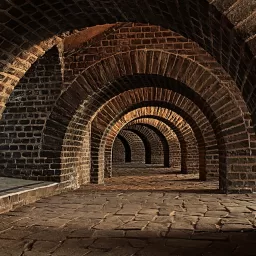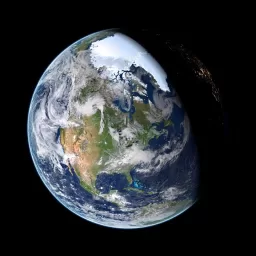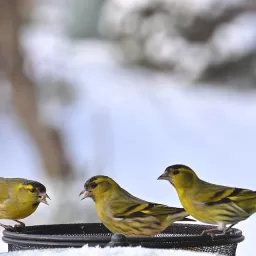Climate is defined as the average temperature in an area over a long period of time. Climate change refers to when a climate is getting warmer or colder. In this case of climate change or “global warming” the temperature is changing for the worse. The conflict is that if the climate keeps getting warmer, we may be thrust into an ice age, or have other serious damage done to our planet. “Global Warming”, by the year 2100, could cause devastation such as; drought, floods and typhoons, and increase the incidence of; malaria, dengue fever and cholera. The temperature has been getting steadily warmer, why?
The main cause of global warming that we know of is called The Green house effect. The suns rays come into the earth’s atmosphere and heat the earth’s surface. Some of this heat goes into the ground but most of it is reflected by ice and water back into space. A natural balance of green house gases are in the air. These gases absorb heat, trapping it in the atmosphere, which in turn keeps our planet warm. Green house gases are necessary for life on this planet, but in the last 200 years more and more green house gases have been added disrupting the balance of gases in the air. The earth is like a green house. If the balance is disturbed the planet becomes to hot or to cold. Too much gas in the air causes too much heat being trapped. In this case it is the added carbon dioxide, methane, and nitrous oxide in the air that is creating the “Green house effect”.
Where do these gases come from? Humans. When we burn fossil fuels for electricity we are creating a carbon dioxide build up in the atmosphere. We are releasing more carbon dioxide than our planet can handle. About 33% of carbon dioxide admissions are from the burning of gasoline in cars and light trucks. The cars with the worst gas mileage are the ones that effect global warming the most. For example the Dodge Durango will emit one pound of carbon dioxide for every kilometer traveled. Or for each gallon of gasoline 19.6 pounds of carbon dioxide is emitted into the air. If car manufacturer were to increase the gasoline mileage by approximately 5 kilometers we could save one million barrels of oil each day and $25 billion in fuel costs annually. It is not only cars that are causing the carbon emissions, it is also air planes, buildings, power plants and of course factories.
We do things that cause Global Warming every day, with out even thinking about it. The truth is we are making more of an impact then we realize on Canada’s environment. Global warming not only has a huge impact on us but on our forests, animal population and our arctic. The location and characteristics of animals and plants in the natural environment depends a lot on the climate. Some are very sensitive to even very small changes in that climate. Consequently they would be impacted by the intensity of climate change and the rate that it occurs. Because the temperature is going to rise in Canada, the range of existing plants and animals is expected to shift North Animals and plants from the United States as well will extend their range Northward into Canada. This means a shift in Canadian ecosystems and their size and composition. During this shift habitat loss, lack of available food, competition from invading species, and change in predator and diseases will occur. For example: The tundra area may shrink by a third and be confined to the Arctic Islands. Some of the spices such as the high arctic Perry Caribou may not be able to extend their range and become extinct as a result.
While warmer temperatures will increase plant growth where current climate is limiting growth, in dry places warmer climates will increase the amount of wild fires and areas burned in Canada. This would in turn challenge plants and animals to adapt and survive in these areas. Canada’s wet lands will also be affected. The wet lands are home to some of Canada’s most rare and endangered species. Climate change is projected to lower water levels and increase temperatures, factors that could jeopardize the survival of plants and animals who thrive in these areas.
Fresh water fish and aquatic life could also be lost in parts of Canada. High temperatures can cause water levels to lower in inland lakes and streams causing fish to shift northward 150 kilometer for every degree increase in temperature. Cold water species, such as brook trout, may be replaced by warm water species. In the arctic, reduced sea ice thickness and rise in sea levels may benefit some species which may be able to expand into new areas. Others such as seals may decline due to less sea ice for breeding and feeding. The polar bear is especially at risk. They could become extinct through starvation if the ocean becomes seasonally ice free for long periods of time. Global warming is melting the polar ice caps robbing polar bears of the ice flows they need to hunt prey. As the sea ice melts polar bears are forced ashore to spend their summers fasting. The arctic sea is shrinking by up to 5% each year. The sea ice has a cooling effect by reflecting light away from the earth’s surface. As it melts, global warming advances even more quickly.
The melting of ice due to Global warming effects more then just animal life. It affects ocean currents, The Gulf stream in particular. The Gulf Stream is one of the worlds most intensely studied currents. Running from the Caribbean all the way to Northern Atlantic, the Gulf Stream plays an important part of transferring heat and salt to the North. The Gulf Stream is a current of warm water flowing from the Gulf of Mexico. It is also part of the North Atlantic current. It flows along the eastern coast line of North America and then circles around to the western cost of Europe and Africa. This current is what keeps our climate warm. This stream allows us to have a summer with temperatures above 0 degrees. The last ice age was caused by the Gulf Stream shutting down. Due to global warming, the polar ice caps and glaciers in the north Atlantic will melt. This adds a lot of fresh water to the current, changing the salinity of the water. Salt water is heavier then fresh water. In this way, the current sinks and flows back along the bottom of the ocean toward the tropics. If enough fresh water is added it may stop the flow because the water is not dense enough to sink. This has happened before and when it did, Europe was thrust into an ice age.
In order not to see any of these things happen we must make drastic changes in the way we as a population live our life. Here are some tips on how you can help stop global warming by changing some of you daily routines;
1. Turn off the lights when you leave a room, and use fluorescent bulbs
2. Turn off all electronics when they are not in use, along with cell phone or battery chargers
3. Choose energy efficient appliances when making new purchases
4. Wait until you have a lot of clothes to wash before using the laundry machine, don’t use the washer for one item because it is your favourite shirt
5. Take shorter showers, heating water uses energy
6. Close the blinds on a hot day if the sun is shining. Dress lightly instead of using the air conditioning, or use a fan
7. Dress warmly inside your house when it is cold instead of turning up the heat
8. Keep air filters on your air conditioning and furnace clean
9. Walk short distances instead of using the car
10. Plant a tree in your back yard
By doing all of these things you will help conserve electricity, which in turn conserves carbon dioxide emissions, helping to reduce green house gases and keep our planet global warming free.





